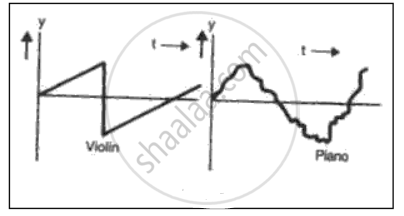Advertisements
Advertisements
Question
What is the difference between a compression and a rarefaction in a sound wave? Illustrate your answer with a sketch.
Solution
A longitudinal wave consists of successive compression and rarefaction that is formed due to continuous to and fro motion of a vibrating object.
A compression is that part of a longitudinal wave in which the particles of the medium are closer to one another than they normally are, and there is a momentary reduction in volume of the medium. It is a region of high pressure and high density.
A rarefaction is that part of a longitudinal wave in which the particles of the medium are farther apart than normal, and there is a momentary increase in the volume of the medium. It is a region of low pressure and low density.
APPEARS IN
RELATED QUESTIONS
Write true or false for a given statement.
A sound is a form of energy.
Which wave property determines pitch?
What is the nature of sound waves in air?
When we change a feeble sound to a loud sound, we increase its :
Before playing the orchestra in a musical concert, a sitarist tries to adjust the tension and pluck the strings suitably. By doing so he is adjusting :
In fig. 2 two musical notes of the same pitch and same loudness are played on a violin and on a piano. Their wave forms are as shown in the diagram below. Explain why the wave patterns are different.

Complete the following sentences :
Sound cannot travel through __________, but it requires a ___________.
For which range of frequencies, human ears are most sensitive?
A continuous progressive transverse wave of frequency 8 Hz moves across the surface of a ripple tank
If the wavelength of the transverse wave is 32 mm, calculate the speed with which wave travels across the surface of the water.
How is sound produced?
